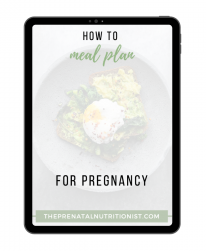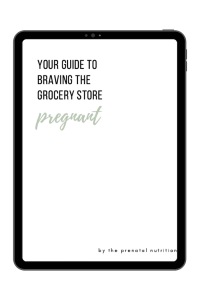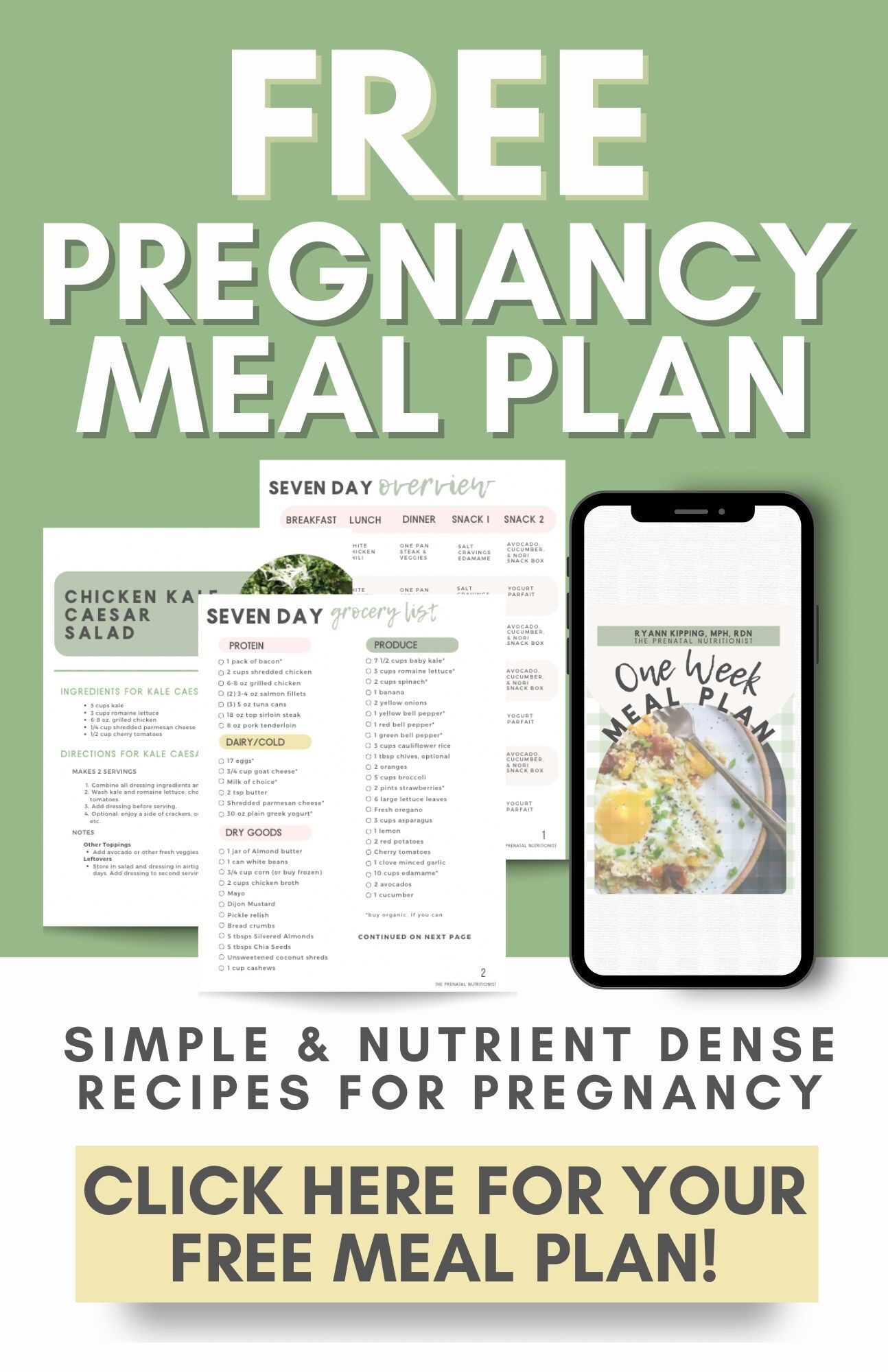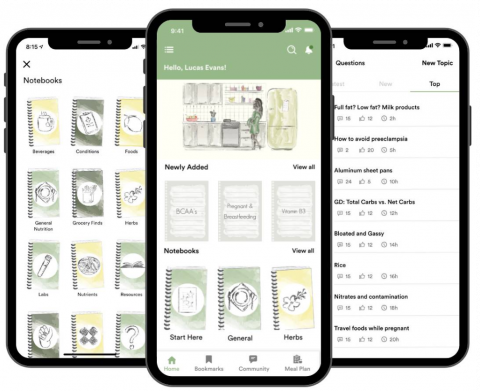What’s better than finding out you’re expecting? Finding out you are expecting TWO! (Or three…or four…you get the point). Twice the babies, twice the fun, right? I’m sure if you’ve found yourself in this situation, you may have some questions–” do I need additional calories for an additional baby?”, “Should I be eating something specifically for twins?”, or “Do my vitamin needs change with multiples?” We are going to get down into the nitty-gritty of what to expect when you’re expecting multiples.
Two is Better Than One
It’s no surprise that twin pregnancies are a higher risk pregnancy. With risk, however, comes reward. To ensure you are keeping yourself and your babies as safe as possible, it is important to take a look into your diet and ensure you are getting optimal nutrition. Risks with twin gestations, according to Goodnight and Newman in Optimal Nutrition for Improved Twin Pregnancy Outcome, includes: low birth weight, preterm births, and intrauterine growth restrictions, which may lead to complications for the babies later in life. The article states:
“The goals for optimization of maternal nutrition in multiple gestations therefore include
- optimizing fetal growth and development,
- reducing incidence of obstetric complications,
- increasing gestational age at delivery, and
- avoiding excess maternal weight gain that could
result in unnecessary postpartum weight retention.”
(Goodnight & Newman, 2009).
As we have discussed before in Eating For Two: Gestational Weight Gain, the weight a mother gains during pregnancy may relate to their pre-birth weight. The same goes for calorie intake during twin or multiples pregnancies. Barbara Luke, ScD, MPH, RD, and writer of Improving multiple pregnancy outcomes with nutritional interventions, provides a chart of Suggested Daily Diet Composition for Twin Gestation by Maternal Prepregnancy BMI.
The macronutrient breakdown follows a 20% from protein, 40% from low glycemic-index carbohydrates, and 40% from fat ratio. She states that a woman with a “normal” prepregnancy BMI should consume roughly 3,000-3,500 calories, 175 grams of protein, 350 grams of carbohydrates, and 156 grams of fat to meet the needs of her growing multiples. Underweight women would have slightly elevated needs. While overweight and obese women would have slightly decreased needs. As stated before in the Eating For Two blog, BMI is not my favorite way to assess health markers. And you should ensure you are eating enough for both your baby and you.
Not only should mothers of multiples be aiming to consume a high quantity of calories, but also the quality of calories.
Ensuring you are getting the vitamins and minerals necessary for healthy babies is so important. The Nutrition Care Manual suggests consuming additional calories from meats (full of iron), fruits and vegetables (full of vitamins and minerals), dairy (full of calcium), and whole-grain bread and cereals (full of fiber), will help to fill any gaps your prenatal vitamin may leave behind. Referring back Goodnight and Newman’s journal article, they state that adequate micronutrient intake may result in an improvement in birth weight in both single and multiples gestation.
This chart below shows the amounts of particular vitamins and minerals above pre-pregnancy needs.
| Vitamin or Mineral: | Amount Above Pre-pregnancy Needs During Twin Gestation (i.e., additional needs): | Foods Containing these vitamins/minerals: |
Calcium Vitamin D | 200-300 mg/day 1,000 IU/day | Dairy, Nuts/Seeds, Sardines Fatty fish, fortified foods, sunshine |
Vitamin C Vitamin E | 500-1,000mg/day 400 micrograms/day | Broccoli, peppers, potatoes Nuts, seeds, oils |
Zinc Magnesium | 14-45mg/day 350-1,000mg/day | Meat, shellfish, legumes Spinach, whole grains, legumes |
Iron Folate | 30mg/day 1mg/day | Beans/lentils, nuts, red meat Leafy greens, citrus fruits, seeds/nuts, avocado |
| Omega-3 Fatty Acids | 300-500mg/day | Fish, flaxseed, fortified foods |
Foods that help add healthy calories include avocado (don’t be afraid to eat a whole one!), full-fat dairy (even heavy cream!), grass-fed butter, nuts, and nut butter, seeds, and healthy oils like extra virgin olive oil or avocado oil.
The biggest take-home is making sure you are eating enough to fuel the growth of your little ones and make sure your choices are packed with the recommended vitamins and minerals to keep you and your babies as safe as possible. Consuming a well-balanced diet full of color, consuming small, frequent meals, snacks, and drinking adequate amounts of water will set you up for a successful twin pregnancy.
If you are concerned about meeting your nutrient needs or carrying those babies to term, join The Prenatal Nutrition Library for evidence based information on prenatal nutrition!
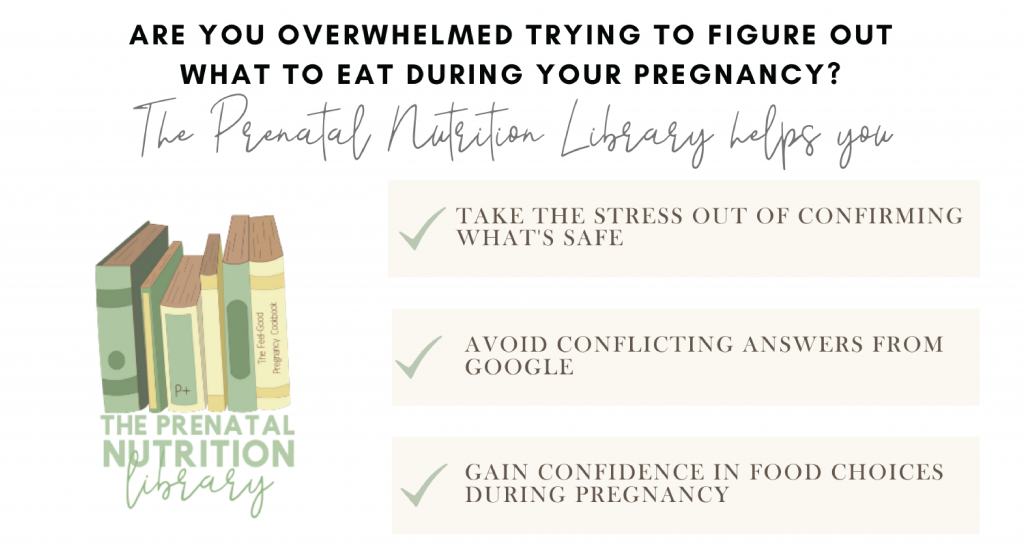
Written by: Kaleigh Eastep
Reviewed/edited by: Ryann Kipping, RDN, CLEC
References:
Luke B. Improving multiple pregnancy outcomes with nutritional interventions. Clin Obstet Gynecol 2004;47:146–62.
Multiple Gestation Nutrition Therapy. (n.d.). Retrieved from https://www.nutritioncaremanual.org/client_ed.cfm?ncm_client_ed_id=50.


